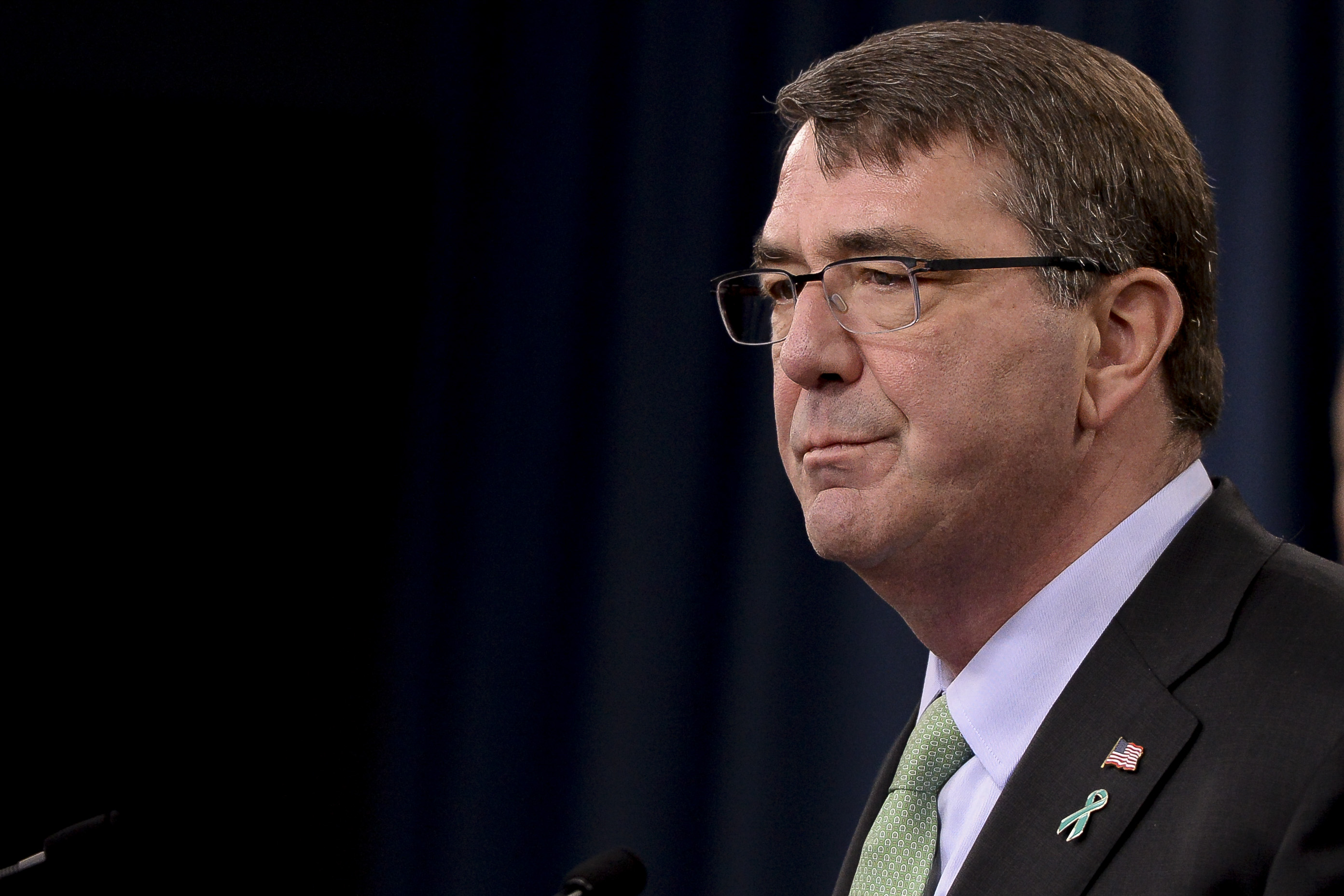
This post has been updated with additional information from Ash Carter’s presentation.
WASHINGTON – Defense Secretary Ash Carter will release a defense budget next week that increases spending on the current fight against the Islamic State in Iraq and Syria but primarily postures the force to succeed against a future high-end threat.
In a speech at the Economic Club of Washington, Carter said the administration’s $582.7-billion defense budget would take “the long view … making choices and tradeoffs to adjust to a new strategic era, and seize opportunities for the future.”
He noted that he and President Barack Obama have discussed five evolving challenges for the military: Russian aggression, a rising China, North Korean nuclear ambitions, Iran’s influence in the Middle East, and countering terrorism.
“To be clear, the U.S. military will fight very differently than we have in Iraq and Afghanistan, or in the rest of the world’s recent memory. We will be prepared for a high-end enemy – that’s what we call full-spectrum,” Carter said, according to his prepared remarks.
“In our budget, our plans, our capabilities, and our actions, we must demonstrate to potential foes that if they start a war, we have the capability to win. Because a force that can deter conflict must show that it can dominate a conflict.

“In this context, Russia and China are our most stressing competitors,” he continued.
“They have developed and are continuing to advance military systems that seek to threaten our advantages in specific areas, and in some cases, they are developing weapons and ways of war that seek to achieve their objectives rapidly, before they hope we can respond. Because of this, and because of their actions to date – from Ukraine to the South China Sea – DoD has elevated their importance in our defense planning and budgeting.”
Overseas spending will reflect these priorities, Carter said. While spending on the fight against the Islamic State will increase – to $7.5 billion, 50 percent more than is allocated this fiscal year – spending for the European Reassurance Initiative to counter Russia’s growing influence will quadruple to $3.4 billion.
Carter also discussed the importance of investing in new technologies aimed at the future high-end fight DoD wants to be prepared for. He noted the importance of undersea capabilities, “where the budget invests over $8.1 billion dollars in 2017, and more than $40 billion over the next five years to give us the most lethal undersea and anti-submarine force in the world.”
The Fiscal Year 2017 budget request invests in the torpedo restart effort and buys unmanned undersea vehicles, P-8A maritime patrol aircraft and nine Virginia-class attack submarines – more of which will be equipped with the Virginia Payload Module than had previously been budgeted for.
“Now, budgets often require tradeoffs,” he said.
“So where tradeoffs among force structure, modernization, and readiness posture needed to be made, we generally pushed to favor the latter two. This is important, because our military has to have the agility and ability to win not only the wars that could happen today, but also the wars that could happen in the future. To put more money in submarines, Navy fighter jets, and a lot of other important areas, one tradeoff we made was to buy only as many Littoral Combat Ships as we really need. This is part of a broader effort in our budget to focus the Navy on having greater lethality and capability that can deter and defeat even the most high-end future threats.”
The Navy beginning last year made plans to increase its lethality but also its overseas presence through keeping more ships forward and equipping them with existing weapons that could be added in the short-term. This distributed lethality concept includes all surface ships and in particular includes plans to deploy LCSs in surface action groups. After Carter announced his plans to truncate the LCS program, the Navy pushed back, citing the need to boost the number of ships in the fleet. The Virginia-class attack sub and Arleigh Burke-class guided missile destroyers are in serial production today, as is the LCS – which costs about a quarter of what the destroyers and subs do.
Carter addressed the fleet count during a discussion period after his speech, saying the Navy had to achieve the “best balance” of ship numbers and high-end capabilities.
“The size of the Navy is increasing, we’re going to go up to 308 ships,” he said.
“We are increasing the size of the Navy, but what’s really important in this year is to improve, increase the lethality of each ship. And so we’re emphasizing that, and we’re also emphasizing undersea.”
Also during the discussion, Carter spoke about tensions in the South China Sea, and in particular efforts by China to claim islands and build up artificial ones to expand their influence. Carter noted that other countries were reacting by doing the same, and “therefore our formal position about these claims in the South China Sea is that we the United States don’t adjudicate those claims. What we do want is everybody to stop land reclamation and stop militarization.”
In response to China specifically, Carter said “we’re going to fly and sail and operate where international law permits, period. And we demonstrate that, and that won’t stop.”
Additionally, “we’re making all these investments that you see in our defense budget that are specifically oriented towards checking the development of the Chinese military.” These investments, coupled with other Asian powers – Japan, the Philippines, Australia and Vietnam, for example – turning to the United States for closer military relationships, should help China see that they are engaging in “self-isolating behavior.”





